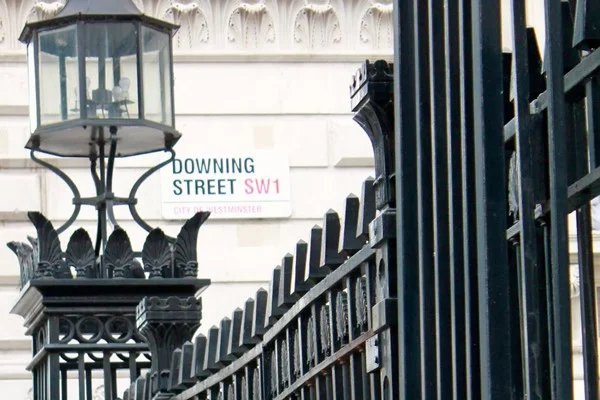News
UK Property Finance Completes a £2.25m Bridging Loan
A client approached UK Property Finance seeking a bridging loan of £2.25 million to cover the purchase cost of investment properties, carry out refurbishments, and later sell the developed properties for a profit.
The client wanted to take funds out of his unencumbered buy to let London property, although the tenants of the property had COVID-19. The client needed to move this forward quickly; therefore, we applied with Hope Capital, who agreed to carry out a drive-by valuation.
In order to meet the client’s deadline, it was paramount that all parties worked together to answer all points quickly and efficiently. This was completed by members of staff at UK Property Finance, Hope Capital, and the lender’s legal team, Freeth’s.
Swift turnaround
Laura Carr, Head of Underwriting at Hope Capital, commented: “It’s always a pleasure working with our friends at UK Property Finance and Freeth’s. Swift and transparent communication was key to ensuring we could get this deal across the line in time. A huge thank you to Lisa and Sian at UK Property Finance, Luke at Freeth’s, and everyone else involved who helped us pull this case off so quickly and efficiently.”
Sian Taylor, Processing Executive at UK Property Finance, commented: “Working alongside the team at Hope Capital was a joy; they were very efficient and worked quickly to resolve any issues that arose during the process. The client wanted fast finance, and that is exactly what was delivered by the team at Hope Capital and everyone else involved. The smooth process delivered by Hope Capital was a relief to the client and to the processing team at UK Property Finance.”
If you require property finance through a bridging loan, contact the team at UK Property Finance for a quick and efficient solution.
Way Home Launches a New 5% Deposit Partial Home Ownership Scheme
First-time buyers looking to get on the property ladder without a conventional mortgage now have the option of an innovative new scheme from Way Home. Albeit, with a significant stamp duty catch and major restrictions on subsequent home improvements,
The new scheme will enable first-time buyers to purchase a property with a 5% deposit without having to obtain a mortgage. Announcing the initiative, Way Home said it will form partnerships with home buyers on their purchases, with the buyer responsible for paying a deposit of 5% to 30% and the company covering the rest of the costs.
After this, the buyer pays a monthly rent to Way Home on the basis of the outstanding amount, rising annually in accordance with inflation. The buyer will also have the opportunity to pay lump sums to Way home to increase the share of the property they own over time.
It is essentially a slightly new take on the classic rent-to-buy model, where the ‘buyer’ makes a continuous series of payments to increase their ownership stake in the property. But with 5% deposit mortgages now available on the High Street, under what circumstances would a rent-to-buy agreement with Way home be preferable?
A case of qualification criteria and loan size
Quizzed on the benefits of the scheme, Nigel Purves, chief executive of Way home, says applicants will be able to borrow much more than would be possible with a conventional lender.
With most high-street loans, first-time buyers are restricted to no more than around 4.5 times their annual income. With the Way home scheme, they will have the opportunity to move into homes valued at up to eight times their annual income.
This could subsequently give first-timers the buying power to move into much more desirable homes rather than settle for basic ‘ starter homes’ on the basis of affordability.
According to Way home, properties eligible under the scheme will be priced between £200,000 and £500,000, in a guaranteed good state of repair, and will require no major building works or alterations. They will also be located exclusively in desirable areas in 41 locations across the country.
“If you can get the size of home you want in the location you want with a mortgage of four times your income, we tell people that, obviously, they should take advice, but that is something they should probably do if they can,” commented Nigel Purves.
“The problem is that most of our customers are living in areas where properties are six to seven times their income or more, and the only way to bridge that gap is by saving for decades or having family members able to help you, which of course most people don’t have.”
Terms and conditions apply
As for the catch, various restrictions will be placed on those purchasing properties under the Way home scheme. For example, major renovations and structural adjustments to properties will not be permitted, such as putting in a new kitchen or building a conservatory.
In addition, buyers will face top-band stamp duty liability, the same as if they were purchasing a second home. In addition, Way home will only allow its customers to build a maximum 40% stake in the property they live on.
“We expect there will be some people who see it as a way to access a property now that they would only have been able to get with a mortgage in ten years’ time: they will chip away at the equity and their salary may increase, and eventually they will be able to get a conventional mortgage and buy us out,” Purves explains.
“Others we think will find during that time period that they might want to change location, they might want to move to somewhere less built-up, maybe where their income to value ratio is lower, and therefore they will ask us to buy their stake back off them, and they will go and buy a home somewhere else.”
Is it Possible to Cover Your University Costs as a Landlord?
It may appear a bizarre concept on the surface, but student BTL mortgages do exist, the idea being that with a ‘student mortgage’ you purchase a property with no down payment and earn money by renting it out to your friends.
Only because it is technically possible does not necessarily make it an appropriate pathway for most students; covering living costs is a real concern for most university attendees, but purchasing a property to rent out is not without its complexities.
An interesting proposition
Several small lenders have put together a range of innovative products aimed exclusively at students. Examples of this include Bath, Loughborough, and Vernon building societies, all of which provide students with the opportunity to buy a home with no deposit required.
Those taking advantage of the products will subsequently be able to rent space in their properties to other students in order to cover the mortgage payments.
‘Mortgages and students are not usually two things that you’d associate as a package,’ commented L&C Mortgages associate director, David Hollingworth.
‘Students are unlikely to have much if any income and therefore will always struggle to meet the primary requirement of a mortgage lender in demonstrating affordability to take on a mortgage,’
‘They also aren’t likely to have a deposit to use a buy-to-let mortgage, let alone the minimum income or homeownership that many lenders would expect,’
‘These issues have seen some lenders offer students a chance to buy a property rather than rent, but with the help of their parents.’
How the scheme works
Eligible applicants are offered a loan to purchase a property with an LTV of 100%, meaning no deposit is required. A guarantor is required to co-sign the mortgage agreement along with the student, typically a family member.
The funds can subsequently be used to purchase a property and rent out spare rooms to friends or other students. From there, monthly payments are collected to both cover the mortgage repayments and make money to cover the owner’s living costs.
‘’The mortgage amount is based on the rental income the property could yield from letting out the spare rooms.
‘The guarantor will be on the mortgage deeds but not on the property deeds, and their income can be used to help the application,’ explains Chris Sykes, associate director and mortgage consultant at Private Finance.
‘If no deposit is available, then the guarantor can either put money on account with the lender to the value of 20 per cent of the mortgage or they can use their own home as security for the loan.’
An attractive initiative, but must be carefully considered from a longer-term perspective. The ongoing costs of homeownership are at an all-time high in the UK, as are those of running a BTL business of any kind.
Anyone interested in becoming a student landlord is therefore advised to seek independent broker support in order to establish their suitability and determine whether it is something they can realistically afford.
Stamp Duty Changes Result in Major Decline in Mortgage Approvals
The partial withdrawal of the stamp duty holiday did little to quell the appetites of those still looking to make the best of the remaining incentive; for those who act fast, there is still the opportunity to make considerable savings by sidestepping stamp duty liability on property purchases that fall below the £250,000 threshold.
Prior to the end of June, the threshold had been held at a much higher £500,000 for several months.
The housing market maintained much of its momentum throughout July and August, in spite of predictions of a major slowdown. However, new figures from the Bank of England suggest that mortgage approvals have taken a tumble throughout July.
A total of 75,200 mortgages were approved in July, compared to the 80,300 approved in June; this indicates performance better than the same period last year but significantly below pre-pandemic norms.
Signs of a return to normality
House builders and estate agents experienced unprecedented demand throughout most of the pandemic. Movers and first-time buyers alike were forced to rethink their priorities during lockdown, which, combined with the temporary stamp duty holiday, triggered frenzied competition for desirable homes.
As the countdown to the full withdrawal of the stamp duty incentive continues, experts are now expecting to see gradual signs of a return to normality.
“We’re likely to see more volatility in sales over the coming months as the tax break tapers further, but all-in-all, this marks the beginning of a return to more normal housing market conditions,” commented Hina Bhudia, partner at Knight Frank Finance.
Others believe that the next couple of months could at least see the housing market’s momentum continue, if not step up somewhat while the opportunity remains.
“We may see another increase in activity in the next couple of months as buyers line up transactions before the stamp duty threshold returns to its normal level of £125,000 from October,” said Martin Beck, senior economic advisor to the EY ITEM Club.
“But once the stamp duty holiday has ended, the EY ITEM Club expects demand to soften and that there will be a modest correction in prices.”
A strong future in uncertain times
Despite the fact that the economic outlook for the UK, in general, is anything but certain, the housing market is expected to continue performing with strength indefinitely.
“We suspect that home purchase demand will remain robust even after the stamp duty holiday ends altogether in October,” said Andrew Wishart, property economist at consultancy Capital Economics.
“Web searches for the property portals Rightmove and Zoopla remain well above pre-virus levels.”
Mortgage Applications Still High Despite Stamp Duty Holiday Expiry
From the moment the temporary stamp duty holiday was announced, everyone expected a major post-holiday slowdown. It seemed inevitable that the moment an incentive was withdrawn, mortgage application volumes would take a nosedive.
What happened was nothing of the sort; according to the latest figures published by Money Supermarket, mortgage application volumes are still high and demand for desirable homes in popular parts of the UK has maintained its momentum.
“The stamp duty holiday proved very popular with many homebuyers,” said Jo Thornhill, mortgage expert at Money Supermarket.
“So it’s only natural that many feared its end could lead to a major dip in home-buying interest.”
Polled by Money Supermarket, just 51% of homebuyers said they credited the stamp duty holiday with keeping the housing market moving over the course of the past year; the rest said it had done little other than create a problematic housing bubble.
Commenting on the figures, Money Supermarket said that all indications suggest buyers are predominantly setting their sights on homes that fall below the current £250,000 stamp duty threshold. No stamp duty will be payable on such properties until the end of September, which goes some way to explain the average mortgage borrowing amount of £213,000 today.
Among those taking out mortgages, the two most popular products are currently two-year fixed rate deals and five-year fixed rate deals, Money Supermarket reports.
“Buyers who are able to complete their purchases before October can still make significant savings,” says Thornhill.
95% of LTV mortgages are making an impact
The figures also suggest that the re-introduction of the 95% LTV mortgage is having a positive impact on the sector, predominantly with first-time buyers. Since the beginning of the year, the number of 5% mortgage products available in the UK has increased from 13 to 177.
“This is a positive trend that is making it easier for younger buyers to get on the housing ladder,” Thornhill commented.
Others have criticised lenders offering 95% LTV products for the strictness of their criteria when determining eligible applicants. 5% mortgages hold huge appeal for first-time buyers, though they are restricted to those with an excellent credit score, proof of a high annual income, and evidence of a generally strong financial position.
Average property prices on the up
Taking a look at medium house prices in regions across the UK, Money Supermarket’s report suggested the highest average property prices were in London (£495,000) and the Southeast (£342,000).
The cheapest average property prices were found in Yorkshire and Humberside, the North West, and the North East, falling between £143,000 and £175,000.
As the average mortgage borrowing amount currently stands at £213,000, this suggests most property purchase activity is taking place within these latter regions of the country.
According to Yorkshire and Humberside, the North West, and the North East, almost half of all prospective buyers are worried that the UK is currently facing a housing bubble that could burst at any time. Furthermore, an additional 25% said they did not think the stamp duty holiday was fair, as the timing of the incentive led to a disproportionate number of prospective buyers missing out.
Exactly How Much Did Boris Johnson Borrow to Refurbish His Downing Street Flat?
It is no secret that Boris Johnson chose a rather questionable time to refurbish his luxury London flat. While most people across the UK were struggling to make ends meet, the Prime Minister raised eyebrows by spending a small fortune on predominantly unnecessary adornments.
The exact amount he borrowed to pay for the refurbishments has been revealed: an eye-watering £52,000. Having been questioned on where the funds came from, the Conservative Party has now admitted that Boris Johnson “personally settled the costs incurred by Lord Brownlow”, a party donor who helped finance the work.
Having previously described what was once the home of Theresa May as a “John Lewis furniture nightmare”, his wife, Carrie, made no secret of her disdain for its décor. Disdain was so severe that the pair thought it sensible to hire top designer Lulu Lytle to oversee its overhaul, which, according to insiders, included £840-a-roll golden wallpaper.
Not that such a high price guarantees quality; as rumour has it, the elaborate wall covering has peeled away from its surface.
A painful price paid by the taxpayer
Documents have now confirmed that the loan repaid by Boris Johnson came alongside an additional £28,600 paid by you, the UK taxpayer. Tasks including painting and sanding his floorboards were funded straight from the pockets of the British public, leaving sour tastes in the mouths of many.
Published financial accounts from the Conservative Party indicate a “bridging loan” of £52,802 repaid by Johnson out of party funds last summer. Lord Ludlow would then go on to cover these costs, but no declaration was made to the Electronic Commission.
Even though the law clearly states that all donations and loans to political parties of five figures or more must be reported,
“All reportable donations to the Conservative Party are correctly declared to the Electoral Commission, published by them, and comply fully with the law. Gifts and benefits received in a ministerial capacity are, and will continue to be, declared in government transparency returns,” was the response from the conservative Party, clearly refusing to acknowledge any wrongdoing.
Questions remain as to how the refurbishment was originally funded and how much the project cost in total. Despite the declaration from the Conservative Party, numerous reports suggest that he may have spent more than £200,000 breaking into his new flat.
Again, all at a time when the rest of the country was struggling to make ends meet and facing a terrifyingly uncertain financial future.
High Street Mortgage Rates Hit New Sub-1% Low as Competition Heats Up
The mortgage battle being fought by the UK’s biggest lenders is heating up, with advertised rates having dipped as low as 0.83% with some banks. There are now numerous deals being advertised with introductory rates of less than 0.9%, with HSBC having broken its own long-standing records with a product up for grabs at just 0.89%.
Elsewhere, Halifax has a market-leading two-year introductory deal available at 0.83%, coupled with a standard £999 arrangement fee.
All the ultra-affordable products available at these kinds of lows are open only to those able to offer a deposit of 40%. Decent offers are available for mortgages with lower down payment requirements, but they do not come close to rivalling these all-time High Street lows.
How low will mortgage rates fall?
Analysts have been debating for some time exactly how low mortgage rates could fall before the beginning of an inevitable return to norms. Experts are split evenly down the middle, with half suggesting they could easily go lower than 0.5% and the other half saying the deals available right now are as good as they are going to get.
Brokers are urging those who are fast approaching the end of their introductory rate mortgage deal to consider switching now before being automatically transitioned to a standard variable rate product. There is a chance for a vast audience of mortgage payers to save many thousands of pounds by taking advantage of the opportunity while it is available.
One of the reasons for these record-low mortgage rates is the fact that the Bank of England base rate is still sitting at 0.1%, where it is likely to remain for some time. The housing market in general has seen record activity over the past few months, with demand having consistently outstripped supply in all regions of the country.
This has prompted lenders to introduce increasingly generous incentives to potential applicants in order to give them a competitive edge over rival lenders.
Competitive deals with lower down payments
For applicants able to pull together a deposit of 25% to 30%, there are deals available that are edging close to the 1% mark. HSBC has a 75% LTV mortgage available with a 1.19% introductory interest rate and an arrangement fee of £999.
Mortgages with a deposit requirement of 15% are still competitive, typically hovering around the 1.8% mark with similar arrangement fees. For buyers looking to take out a 90% LTV loan, there is a significant shift in average rates from around 2.2% to 2.5% or more. Some deals for 10% mortgages are hovering around the 2.9% mark, though with additional incentives such as low arrangement fees and up to £500 cashback with some lenders.
Applicants are therefore advised to consider the total costs associated with taking out a mortgage rather than focusing exclusively on the initial low APR.
Mortgage Payers Advised to Switch to Save Thousands
Experts are advising homeowners approaching the end of their two-year fixed-rate periods to consider switching to a new deal rather than automatically transitioning to their lender’s SVR (standard variable rate).
According to Moneyfacts.co.uk, the average mortgage payer could save an average of 1.93% on their mortgage payments by taking action at the opportune moment.
Data suggests that while the average two-year fixed mortgage rate was 2.53% in July 2018, today’s average SVR is around 4.46%. Consequently, those who allow their loans to be automatically switched to the lender’s SVR can expect an average increase in their mortgage repayments of 1.93%.
This would mean that for a mortgage payer with an outstanding balance of £250,000 and 23 years left on their term, their monthly repayments would be £1,449.99 on an SVR mortgage of 4.46%.
Moneyfacts.co.uk reports that two-year fixed-rate loans are today being offered at an average of 2.05%, a full 2.41% less than today’s average SVR. This would therefore mean that if the same homeowner above switched to a 2.05% two-year fixed rate deal, they would face a much lower monthly repayment of £1,136.82.
This would subsequently save them £313.17 per month, amounting to a huge £3,758.04 saving over the course of a year.
A temporary window for significant savings
While there is still plenty of scope for homeowners to make huge savings by switching at the right time, market movement suggests the window may be closing. Two-year fixed rates are slowly but steadily rising, gradually eroding the savings that could be made by switching at the opportune moment.
“With the average SVR likely to remain more static moving forward and the mortgage market itself remaining fluid, as lenders continue to amend their ranges in reaction to an ever-evolving landscape, there is no guarantee that rates will not continue to increase,” commented Eleanor Williams, a finance expert at Moneyfacts.co.uk.
“However, as there remains an almost 2.50% difference between the average SVR and the average two-year fixed rate today, the benefits of switching speak for themselves, as being able to save significantly on monthly outgoings could be more important than ever in these uncertain times.”
“Those who wish to explore whether they are able to reduce their rate and consequently their monthly mortgage payment would do well to move swiftly.”
“As with any financial commitment, seeking advice from an independent, qualified adviser has never been more relevant, as understanding the true cost of any new deal, taking into account any fees and incentives, and indeed keeping up-to-date on the available products and criteria could be made significantly easier with assistance from a professional.”







